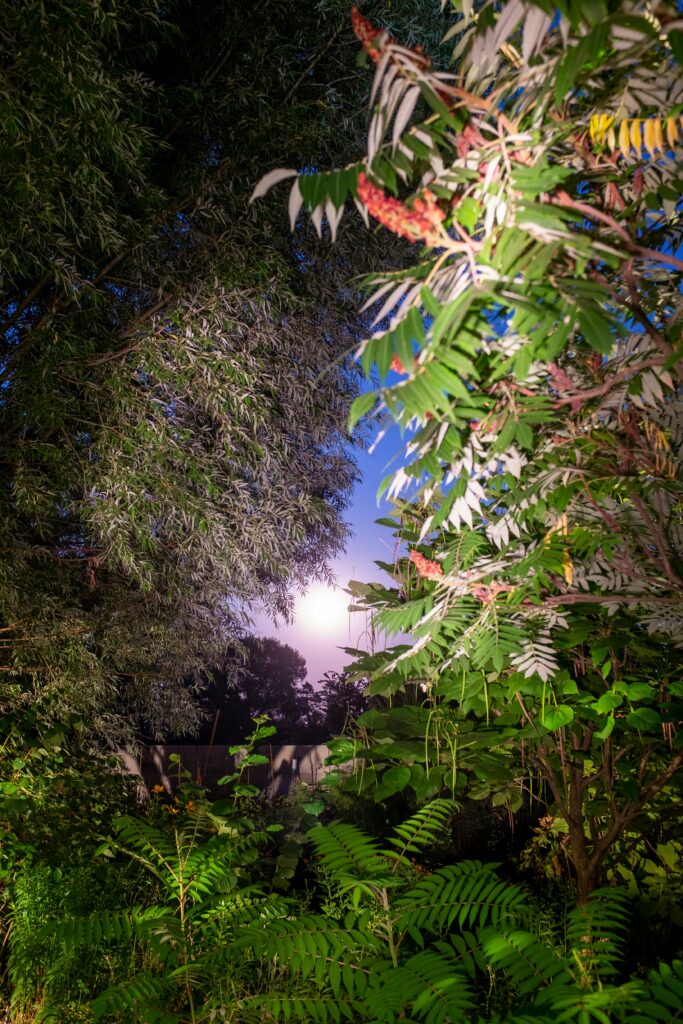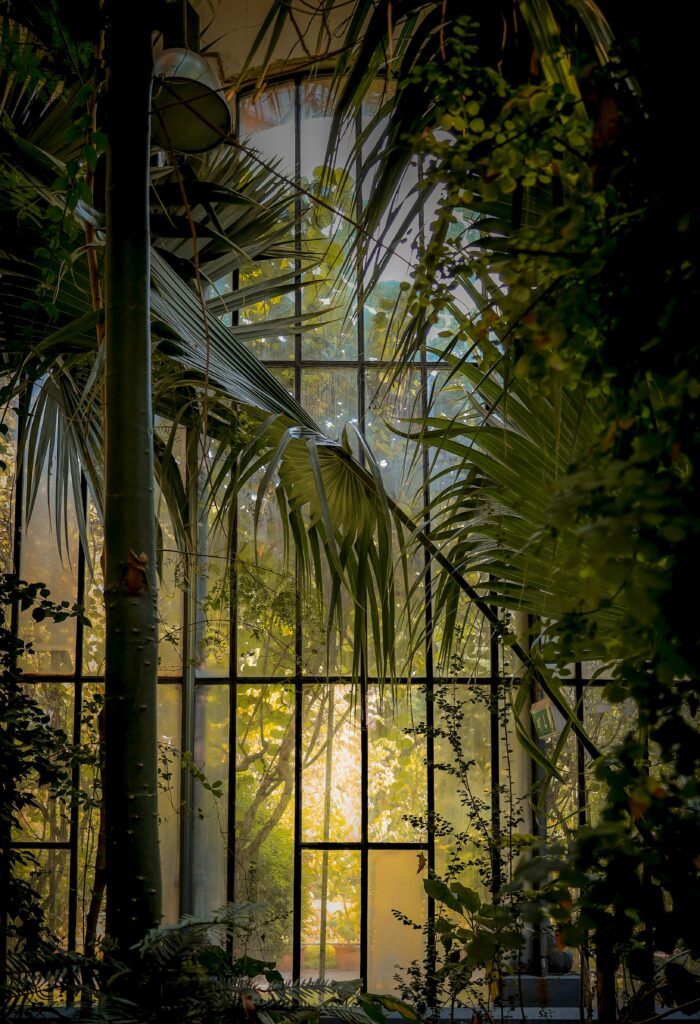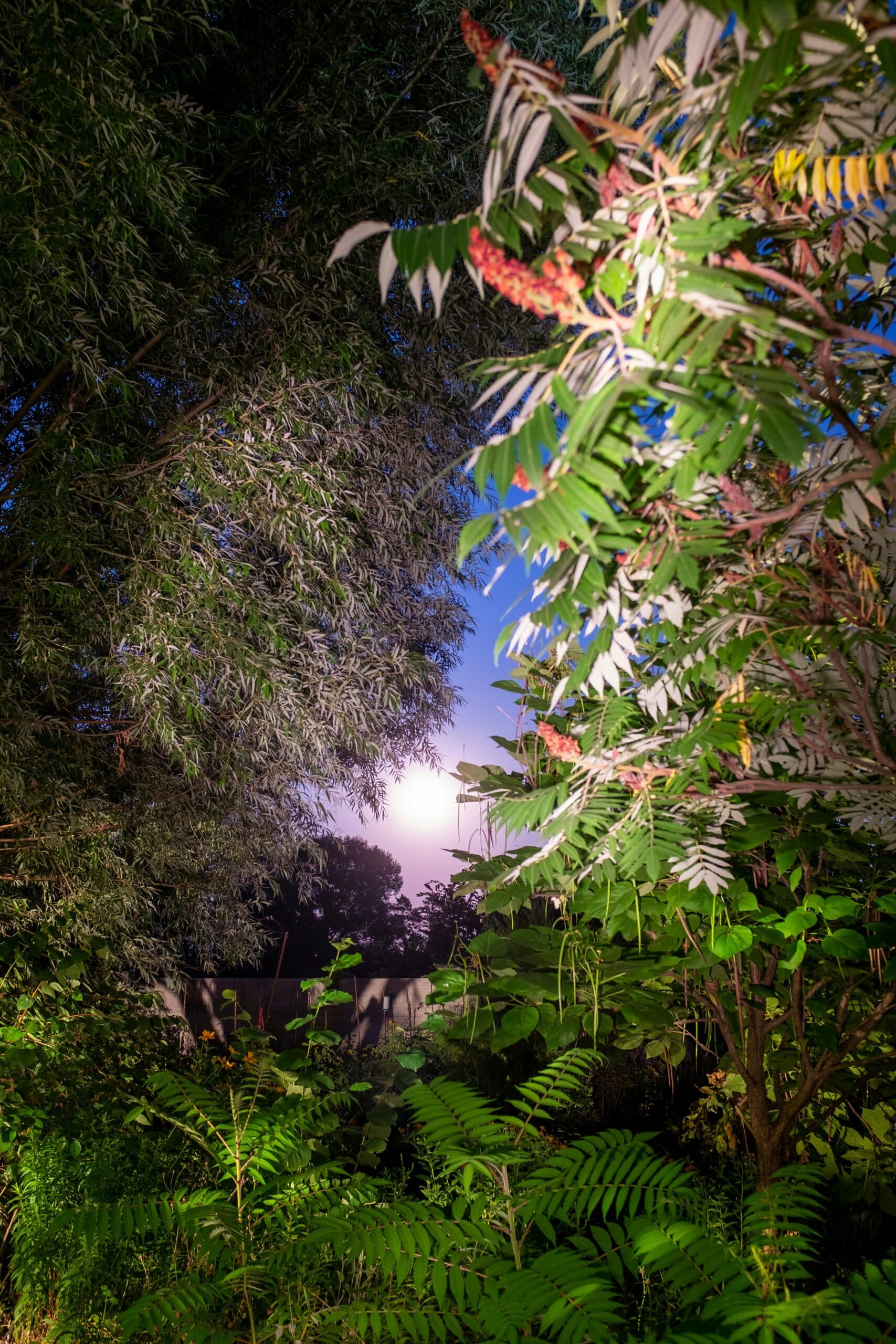Anúncios

As urban dwellers continue to explore innovative solutions to maximize their green spaces, vertical gardens have emerged as a promising solution. Yet, one critical aspect of maintaining a thriving vertical garden is effective lighting. Understanding how to harness the power of artificial light to fuel these skyward sanctuaries can lead to an extraordinary, thriving urban oasis. Whether you are an amateur gardener trying to make the most out of your apartment balcony or a seasoned urban farmer looking to expand your green footprint, illuminating your vertical garden can dramatically transform your space. In the forthcoming paragraphs, we’ll delve into the world of artificial lighting for vertical gardens. From understanding the science behind plant photosynthesis to the spectrum of light best suited for your greenery, we’ll provide a comprehensive guide to help you illuminate your vertical garden. Moreover, we’ll discuss the benefits and drawbacks of various lighting options, from traditional fluorescent lights to modern LED grow lights, to help you make an informed decision. Additionally, we’ll share insights on how to optimize light placement and intensity to ensure your plants get the ideal exposure they need to thrive. By the end of this discussion, you’ll have a clear understanding of how to effectively use artificial light in your vertical garden. With the right knowledge and tools, your vertical oasis can flourish, transforming your urban dwelling into a verdant paradise.
Understanding the Basics of Artificial Lighting for Vertical Gardens
In vertical gardens, the challenge of providing adequate light is often more pronounced, especially in indoor environments. Here, the role of artificial light becomes indispensable. Artificial lighting in the context of gardening refers to light sources that are not directly sun-dependent, such as fluorescent lamps, LED lights, high-intensity discharge lamps (HID), and others.
Anúncios
Light Spectrum: Crucial for Plant Growth
One of the key factors to consider when choosing artificial lighting for your vertical garden is the light spectrum. Different colors or wavelengths of light, visible in a rainbow, have different impacts on plant growth. For example, blue light aids in vegetative growth, promoting stronger roots and overall plant health. Red light, on the other hand, encourages flowering and fruiting.
Anúncios
Optimizing Light for Vertical Gardens: A Guide to Artificial Lighting
Vertical gardening offers an exciting and space-efficient way to grow plants in urban environments. However, one of the most significant challenges in vertical gardening, particularly indoors, is ensuring that plants receive adequate light. Artificial lighting plays a crucial role in overcoming this challenge by supplementing or replacing natural sunlight, ensuring that plants can thrive even in low-light environments. In this section, we’ll explore the basics of artificial lighting for vertical gardens, including the importance of light spectrum, types of lights available, and how to best utilize them for optimal plant growth.
Understanding Artificial Lighting for Vertical Gardens
Artificial lighting in vertical gardens is any light that is artificially created, as opposed to sunlight. For indoor vertical gardens, artificial lighting is often necessary because these gardens may not receive sufficient natural light from windows or other sources. The right type of lighting can make all the difference in plant health and growth.
There are several types of artificial lights that can be used in vertical gardening, including:
- Fluorescent Lights: These lights are energy-efficient and widely available. They provide a broad spectrum of light, making them suitable for various stages of plant growth.
- LED Lights: LEDs are one of the most efficient lighting options. They emit very little heat, which is essential in confined spaces, and they can be adjusted to emit specific light spectrums ideal for different plant stages.
- High-Intensity Discharge (HID) Lights: These lights are more powerful than fluorescent and LED lights and are often used in larger setups where intense light is necessary for plants that need high light intensity.
- Incandescent Lights: These lights are less commonly used in vertical gardening, as they tend to generate too much heat and are less energy-efficient compared to other lighting options.
The Importance of Light Spectrum in Vertical Gardens
The light spectrum refers to the different wavelengths of light emitted by artificial light sources. Plants use light for photosynthesis, and the spectrum of light can significantly affect plant growth. For vertical gardens, understanding the role of different colors of light is key to promoting healthy growth.
1. Blue Light
Blue light is crucial for the vegetative growth stage of plants. It encourages the production of chlorophyll, which is essential for photosynthesis. Plants exposed to blue light tend to develop strong root systems and healthy foliage. This makes blue light ideal for the early stages of growth, especially for leafy greens, herbs, and other plants that require abundant foliage.
2. Red Light
Red light plays a significant role in promoting flowering and fruiting. It helps plants transition from vegetative growth to reproductive growth, stimulating the production of flowers and fruits. Plants like tomatoes, peppers, and many flowering varieties benefit from red light during their bloom and fruiting stages. In a vertical garden setup, using red light during these stages can significantly boost plant productivity.
3. Full-Spectrum Light
Some artificial lights, particularly LED and fluorescent varieties, offer full-spectrum light, which mimics natural sunlight. Full-spectrum lights provide a balanced combination of blue, red, and other wavelengths, offering a well-rounded light source for plants in all stages of growth. Full-spectrum lights are highly versatile and can be a great choice for gardeners who want to provide consistent light conditions for a variety of plants.
Factors to Consider When Choosing Artificial Lighting
When selecting artificial lighting for a vertical garden, there are several important factors to consider to ensure optimal plant growth:
- Light Intensity: Different plants have varying light intensity requirements. For vertical gardens, it’s essential to provide enough light intensity to reach all layers of the garden, especially if you’re growing multiple tiers of plants. In general, plants require more intense light during their flowering and fruiting phases.
- Duration of Light Exposure: Plants also require the correct duration of light exposure, which can be regulated with timers. For most plants, a cycle of 12-16 hours of light per day is ideal, followed by a dark period for rest. The length of the light cycle may vary depending on the species and their growth stage.
- Energy Efficiency: Given the potential for large-scale setups in vertical gardens, energy efficiency should be a priority. LEDs are highly energy-efficient and produce less heat than incandescent or fluorescent lights, making them ideal for reducing energy consumption while maintaining a healthy growing environment.
- Heat Emission: Vertical gardens, especially indoors, are often confined in small spaces. Too much heat can stress plants and affect growth. LEDs are excellent in this regard because they produce minimal heat. On the other hand, HID and incandescent lights can generate substantial heat, which may require additional ventilation or cooling systems in your vertical garden.
Intensity: Finding the Right Balance
Light intensity refers to the amount of light that a plant receives. Inadequate light intensity can lead to weak, spindly plants, while too much can cause leaf burn. This balance becomes more complex in a vertical garden due to varying distances between the light source and different plants. Therefore, having adjustable lighting can help maintain the right balance.
Choosing the Right Artificial Lights for Your Vertical Garden
Selecting the right type of artificial lighting for your vertical garden is crucial for promoting healthy plant growth. There are several options available, each with its own set of advantages and considerations. In this section, we will explore the two most commonly used types of grow lights: fluorescent lights and LED lights, and help you determine which one best suits your needs.
Fluorescent Lights
Fluorescent lights have long been a popular choice for indoor vertical gardens due to their efficiency, affordability, and ability to provide a broad spectrum of light. These lights are particularly effective in providing the light needed for healthy plant growth without generating excessive heat, which can be a concern in confined spaces.
Advantages:
- Energy Efficient: Fluorescent lights consume less electricity compared to traditional incandescent bulbs, making them a cost-effective choice for indoor gardeners.
- Cool Light: Fluorescent lights produce relatively low amounts of heat, making them suitable for use in close proximity to plants without causing heat stress.
- Full Spectrum Light: Fluorescent lights offer a decent balance of blue and red light, essential for supporting both vegetative growth and flowering. However, they may not be as efficient as other types of lights in providing light for specific growth phases.
Best for:
- Low to Medium Light Plants: Fluorescent lights are most effective for plants that do not require high light intensity. They work well for leafy greens, herbs, and plants in their vegetative stage.
- Smaller Vertical Gardens: Fluorescent lights are ideal for small vertical garden setups where intense light is not a requirement.
Considerations:
- Light Intensity: Fluorescent lights typically emit lower light intensity, which can limit their effectiveness for larger plants or those that require more light for optimal growth.
- Lifespan: While they have a reasonable lifespan, fluorescent lights generally need to be replaced more often than LEDs.
LED Lights
LED lights have quickly become a preferred choice for vertical gardeners due to their high energy efficiency, long lifespan, and the ability to customize the light spectrum. Their versatility makes them suitable for various plant types and growth stages.
Advantages:
- Energy Efficiency: LEDs use less energy than both fluorescent and incandescent lights to produce the same amount of light, making them one of the most energy-efficient lighting options available.
- Adjustable Spectrum: One of the key benefits of LED grow lights is their ability to emit specific wavelengths of light. By adjusting the light spectrum, gardeners can provide the most suitable light for the various growth stages of their plants. Blue light supports vegetative growth, while red light promotes flowering and fruiting.
- Low Heat Output: LED lights produce minimal heat compared to incandescent or high-intensity discharge (HID) lights, which helps maintain optimal temperatures in your vertical garden setup.
- Long Lifespan: LEDs are designed to last up to 50,000 hours or more, which reduces the frequency of bulb replacements and makes them a cost-effective option over time.
Best for:
- High Light Requirement Plants: LEDs are ideal for plants that need intense light, such as fruiting and flowering plants. They can support larger vertical garden setups and plants that require higher light levels.
- Customization: If you are growing a variety of plants with different light needs, LEDs can be adjusted to provide the right spectrum for each plant type.
Considerations:
- Initial Cost: LED lights are more expensive upfront compared to fluorescent lights. However, their long lifespan and energy efficiency usually offset the initial investment.
- Need for Proper Setup: Although LEDs provide an adjustable spectrum, they may require more careful setup to ensure they emit the appropriate intensity and wavelength for your plants.
Which Light is Right for Your Vertical Garden?
The right lighting for your vertical garden depends on several factors, including the types of plants you are growing, the size of your garden, and your budget.
For larger gardens or plants with high light needs: If you’re growing fruiting or flowering plants, or if you need more control over the light spectrum, LED lights are a superior choice. They offer greater flexibility and efficiency, which can lead to higher yields and healthier plants over time.
For small, low-light plants: If you’re growing plants like herbs and leafy greens that don’t require intense light, fluorescent lights are a great option. They are affordable and provide enough light for plants that thrive in low to medium light conditions.
HID Lights
HID lights are often used in commercial vertical gardens. They offer high light intensity and a broad spectrum, which can be advantageous for certain crops. However, they can generate a lot of heat and use more energy compared to other options.
Optimizing Artificial Lighting for Vertical Gardens
Lighting Placement and Timing
The positioning of your lights should be such that all plants receive adequate light, bearing in mind that light intensity decreases with distance. Timing is also crucial. Plants need dark periods as much as they need light, so creating a balance is essential.
Temperature Management
Artificial lights can produce heat which can affect plant growth. Therefore, maintaining a consistent temperature is key. This can be achieved by placing lights at a suitable distance and using heat sinks or fans.
Monitoring and Adjusting
Finally, monitoring plant health and adjusting your lighting setup accordingly is essential. Be observant for signs of light stress in plants, such as discolored leaves or stunted growth, and adjust the light intensity or distance as needed.
Building a Lush Vertical Garden with Artificial Lighting: A Step-by-Step Guide
Step 1: Determine the light requirements of your plants. Different plants have different light spectrum and intensity needs.
Step 2: Choose the appropriate artificial light source based on these requirements.
Step 3: Install the lights in a manner that ensures all plants receive sufficient light.
Step 4: Set up a light timer to automate the lighting schedule.
Step 5: Monitor plant growth and adjust the lighting setup as needed.

Conclusion
In conclusion, ‘Illuminate Your Vertical Oasis: Harnessing the Power of Artificial Light for Lush Vertical Gardens’ underscores the significance of artificial lighting in cultivating thriving vertical gardens. The use of artificial light extends beyond mere functionality; it shapes and enhances the aesthetic appeal of the garden, ultimately creating a lush, thriving oasis. The integration of artificial light in vertical gardens, as explored in this article, is a testament to the innovative spirit of modern gardening. It pushes the boundaries of traditional horticulture, proving that urban spaces can be transformed into green, vibrant havens. The power of artificial light in vertical gardening showcases a versatile, sustainable, and efficient approach to urban greenery. Therefore, it’s evident that the future of urban gardening is bright – quite literally. By harnessing the power of artificial light, we can breathe life into our urban spaces, encouraging the growth of diverse, robust vertical gardens. This transformative approach sets a new standard for sustainable urban living, redefining the possibilities for garden design in the 21st century.

